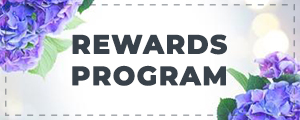| Juniperus procumbens 'Nana' | USDA Zone: 4-9 |
Dwarf Japgarden Juniper is a dwarf conifer which is primarily valued in the garden for its broadly spreading habit of growth. It has attractive bluish-green evergreen foliage. The scale-like sprays of foliage are highly ornamental and turn plum purple in the fall, which persists throughout the winter. It produces blue berries from late spring to late winter.
A spectacular and dependable groundcover for sunny locations, extremely low growing and mat-forming, spreads almost indefinitely, very adaptable; superb choice for a low groundcover when used in mass, considered one of the best by designers.
Dwarf Japgarden Juniper is recommended for the following landscape applications;
- Mass Planting
- Rock/Alpine Gardens
- Border Edging
- General Garden Use
- Groundcover
Companion Plants: Rose, Clematis, Catmint, Barberry, Russian Sage, Speedwell
|
Key Feature
|
Light Needs | Landscape Uses |
 |
 |
|
|
|
|
| More About Dwarf Japanese Garden Juniper |
| Height: 10-12 inches |
Spread: 6 ft |
|
This is probably the best bonsai-style Juniper for Asian gardens or for small topiary. Super tight foliage and lovely blue-green tint makes a neat mound. Perfect with rocks and in rock gardens or around natural rocky water features. Because it is available in so many preshaped forms, you can choose one for a formal setting, another for true bonsai and a third for a courtyard specimen with multiple branches. Highly recommended for small gardens; if there's room for only one Juniper, let it be this one. Easily grown in sandy soils on the dry side; adaptable to a wide range of well-drained soils. Water deeply, regularly during first growing season to establish an extensive root system; reduce frequency once established. Apply fertilizer before new growth begins in spring. Prune topiary forms regularly to maintain shape and size. Note that when grown in a container, it may not perform exactly as indicated on the tag - this is to be expected. Also note that when growing plants in outdoor containers and baskets, they may require more frequent waterings than they would in the yard or garden. Be aware that in our climate, most plants cannot be expected to survive the winter if left in containers outdoors, and this plant is no exception. NOTE: Some flowers and plants may be harmful or poisonous to people or pets if touched or ingested. If you require more information before placing an order, please let us know in advance. |












